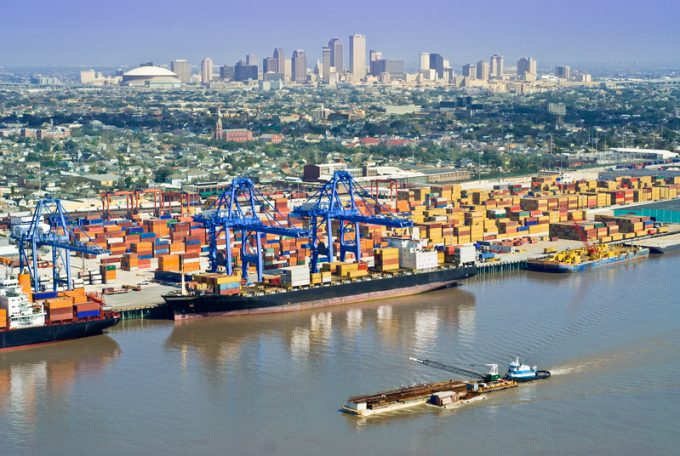Prince Rupert port in new push to win traffic following capacity hike
Boosted by a fresh injection of handling capacity, DP World’s Prince Rupert Port has reminded ...

The recent decline in volumes on the US Gulf and east coasts and in northern Canada has not derailed port expansion plans.
Designs for new container terminals on the lower Mississippi have taken steps forward, while the port of Prince Rupert is working on an export transfer facility as it awaits the outcome of a feasibility study for a container terminal that would nearly double its box capacity.
The board of commissioners of the port of New Orleans (NOLA) last week advanced plans for a vital road link to connect the planned container terminal with the interstate system.
In partnership with Ports America and MSC, NOLA is bent on creating a $1.8bn box facility to handle vessels of all sizes and raise its capacity by 2m teu. Construction of the Louisiana International Terminal (LIT) is slated for next year, with the first berth to open in 2028.
A critical piece of the puzzle is the ‘St. Bernard Transportation Corridor’, to connect the facility with the interstate. The board reaffirmed its commitment to the road project as well as authorising NOLA to enter into a contract with consulting firm WSP USA to analyse potential financing structures, delivery methods, project governance and stakeholder engagement for the corridor.
The port is facing headwinds from local residents opposed to the project, which is in the federal permitting and design process. According to a recent poll, 73% of the residents are against it. And last week they received fresh ammunition in the shape of a report on the project by Vickerman & Associates, a firm specialising in the design of port facilities, commissioned by the previous parish administration.
Its report argues that more suitable sites further downriver should be favoured, cites ‘unsafe clearance issues’ and calculates that vessel departures from LIT would block 82% of the navigational river traffic.
“Not conducting a comprehensive site selection analysis would be a strategic mistake for the State of Louisiana, and indeed the nation, now more than ever,” the authors commented.
This could be grist to the mill of the rival container terminal project, three miles downriver by the port of Plaquemines and APM Terminals, although APM has argued that the two facilities would be targeting different traffic flows.
APM and the port this month signed a letter of intent to build the box terminal, which will comprise 200 acres, on-dock rail and a berth to handle 14,000 teu vessels in its first phase, with room to expand the site to 900 acres.
One industry executive believed there should be room in the market for both facilities, given the shortage of container terminals on the Gulf coast, but added: “Both will have a tough sell as they are both river ports and carriers hate diversions up rivers.”
Container volumes at NOLA rose 11.5% in the first 11 months of last year, whereas several ports on the east and Gulf coasts have seen traffic shrink as more Asian imports are routed via the west coast, a trend reinforced by problems at the Panama and Suez canals. However, this has not dented expansion plans so far.
Up in Canada, the port of Prince Rupert is hoping for a rebound in traffic after three years of declining container throughput. Results for the past year show a 5% drop in cargo, overall, while container volumes at DP World’s Fairview facility fell 32%.
Port president and CEO Shaun Stevenson appeared undaunted. He said: “The port of Prince Rupert is at a critical juncture, and we are focused on actively expanding the services, capacity and capabilities required to strengthen our competitive advantage that trade partners and industry have come to rely on, and grow our gateway.
“The 2023 results underscore the importance of the projects already under way to develop large-scale transloading infrastructure and energy export facilities. These developments will open a new chapter in intermodal trade and anchor Canada’s role in global energy security for decades.”
Having completed a 5km private road to link the Fairview box terminal with an export transloading facility in 2022, last summer the port began construction of the $750m rail-to-container project. Designed to handle 400,000 a year, the facility is due to come on stream in Q3 26.
Capacity of the Fairview terminal was increased to 1.6m teu in 2022 and further expansion to 1.8m teu is in the planning stage. This is small beer compared with plans for a $2.5bn second container terminal, which would nearly double the port’s box capacity.
The feasibility study for the project is due later this year. When the plan was taking shape, Prince Rupert was soaring on meteoric traffic growth. The decline in traffic over the past three years may have given the planners food for thought.
Comment on this article